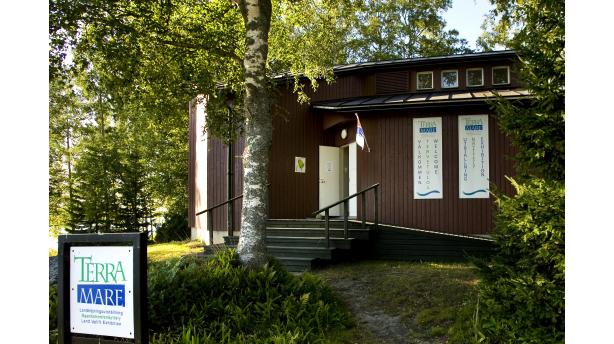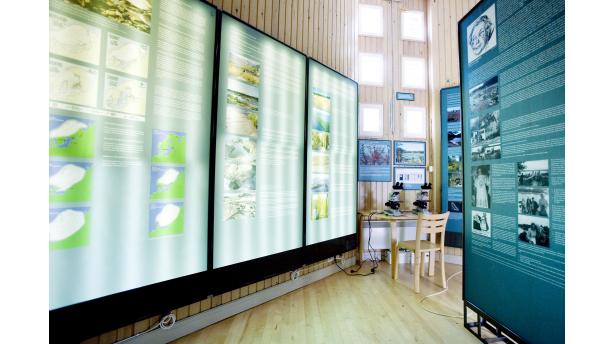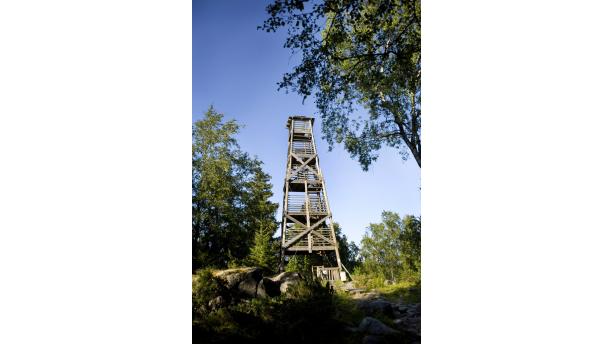Museum A-Ö » Nature and garden » Terra Mare
Terra Mare




Did you know...
During the last Ice Age the ground subsided into the crust of the earth for the amount of one kilometre.
The theme of the Terra Mare exhibition in the Köpmanholmen of the Larsmo archipelago is unique, namely upthrust. During the last Ice Age over 10 000 years ago the Kvarken was covered by the thickest icecap in all of Northern Europe. The unique landscape formed by heavy masses of ice was gradually uncovered as the ice melted. Explore the forms of upthrust before, now and in the future both in the exhibition space and outside in the nature.
The first cliffs rose from the sea on the area of present day Larsmo 2 000 years ago. Upthrust has been significant in Ostrobothnia, and even today the earth rises in Larsmo approximately 0,8 cm every year. In these areas upthrust has been most intensive in all of the country, and the terrain rose about 1,2 cm per year during the last 2 000 years. Upthrust is still a significant and unique phenomenon in Ostrobothnia, and it can clearly be perceived with the naked eye during one lifetime. The changing of the coastline was observed already in the beginning of the 18th century, but at that time it was suspected to be caused by the evanescence of the seawater, which is why the phenomenon was called the fleeing of water. Not until the 1880s was upthrust confirmed as the reason.Terra Mare is composed of three parts: the exhibition space, the nature track and the belvedere. The exhibition offers versatile information about upthrust, its formation and effects on the present day as well as the beginning of the next Ice Age. With the illustrations and maps you can begin to understand the way in which Finland was covered by ice and what the archipelago looked like hundreds of years ago. The ancient wild animals, such as the mammoth, differ from present day animals, but for instance the mountain hare hopped around in our forests already in the days of the past. Pictures of potholes demonstrate the formation of this special Ice Age phenomenon. There is also a microscope in the exhibition space, which the visitors can use to explore geological phenomena at close range.
After the exhibition you can take a hike on the nature trail and observe the tracks of upthrust in the environment. The ancient shore has been mapped and registered on the information plaques, which have been placed along the nature trail circling the small island. A visit in the belvedere is one part of the experience and atop the tower you can observe the sea from above and see the signs of the Ice Age in the nature. The coastline is also visible from the belvedere as are the moraines typical for Larsmo, and one can of course also enjoy the beautiful scenery from up there.
Combine a day at the Köpmanholmen beach with your visit and stop after the nature hike in the café, where lunch and an á la carte menu are served in the summer. A free boat trip will take you to the Köpmanholmen island in a matter of few minutes.



